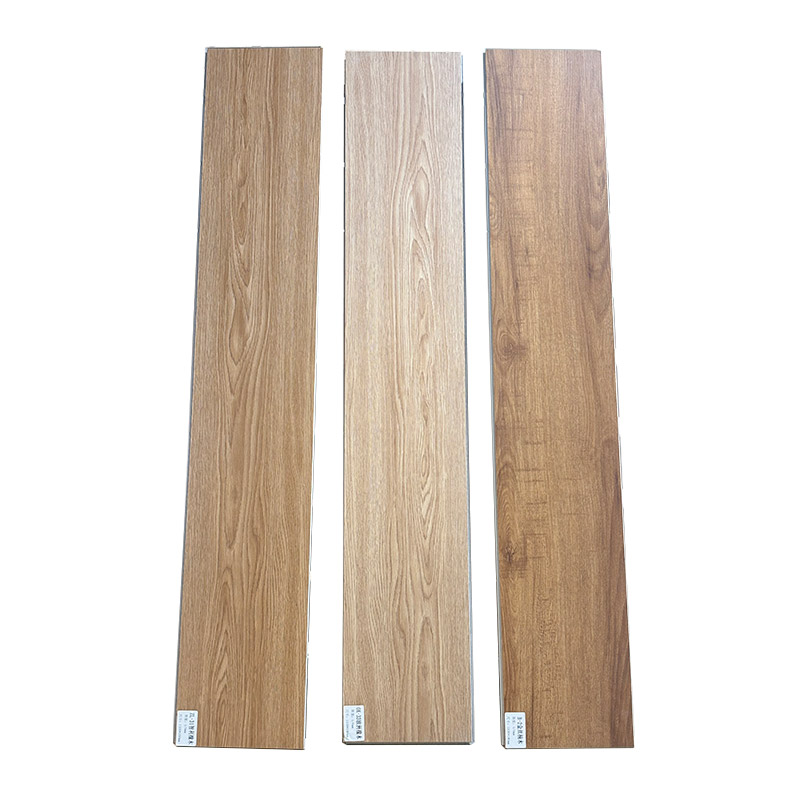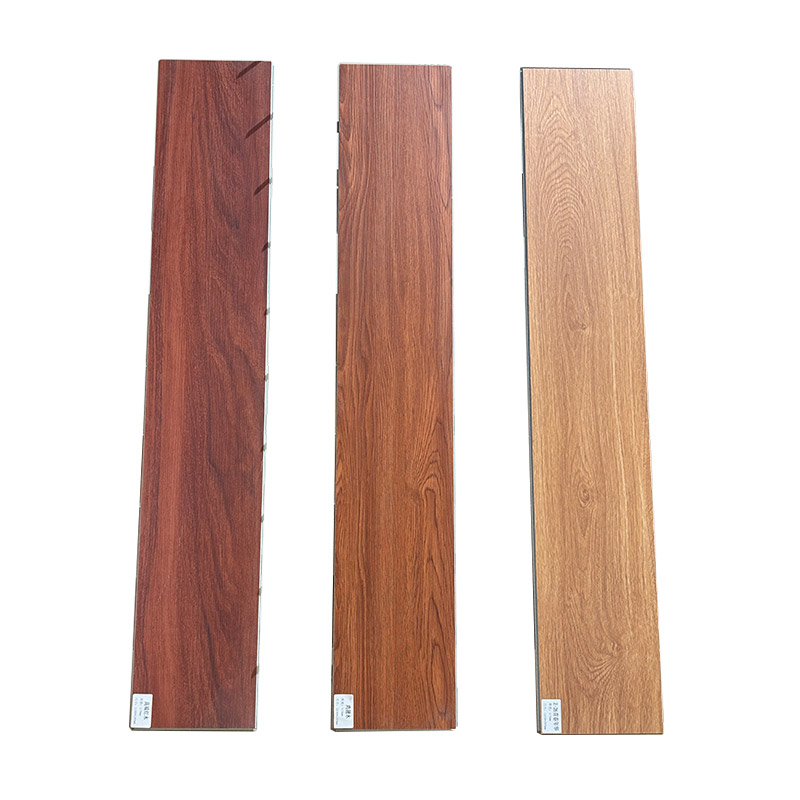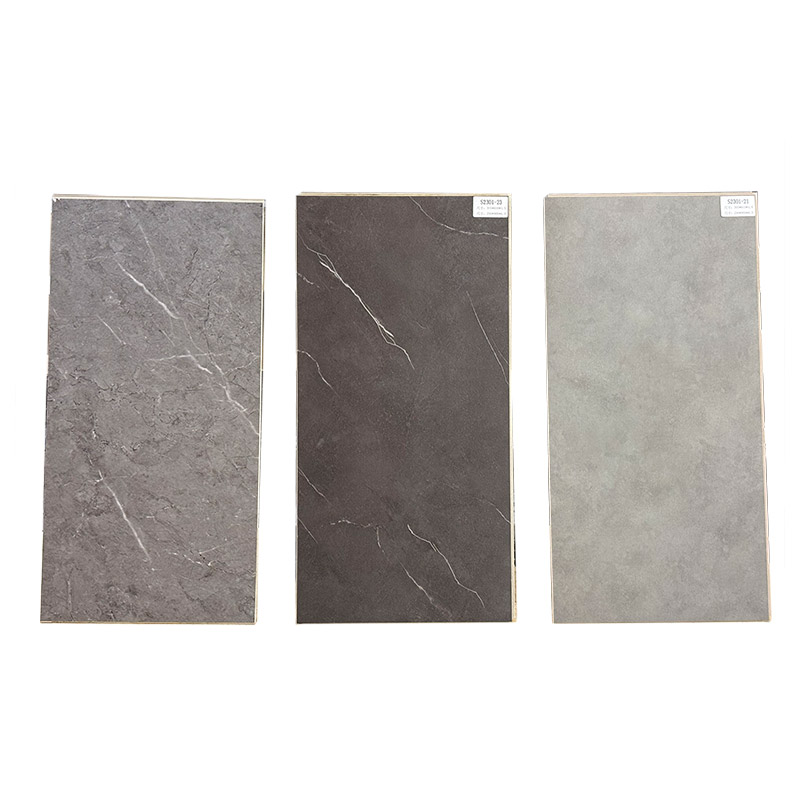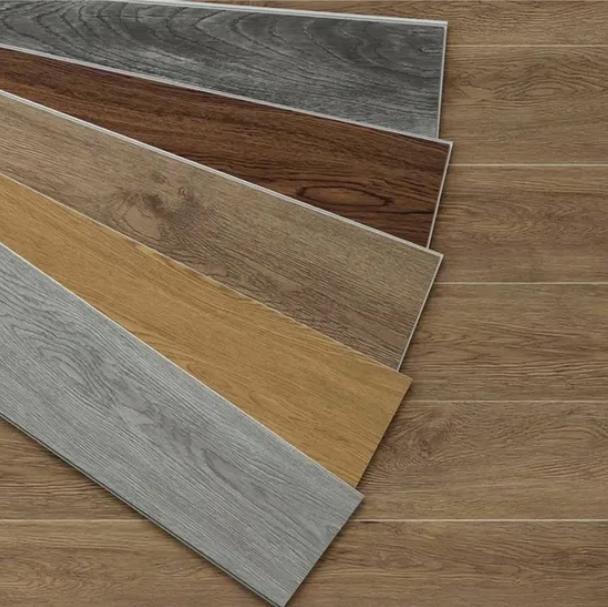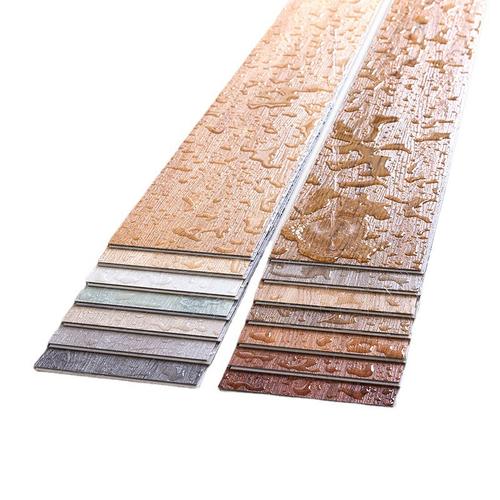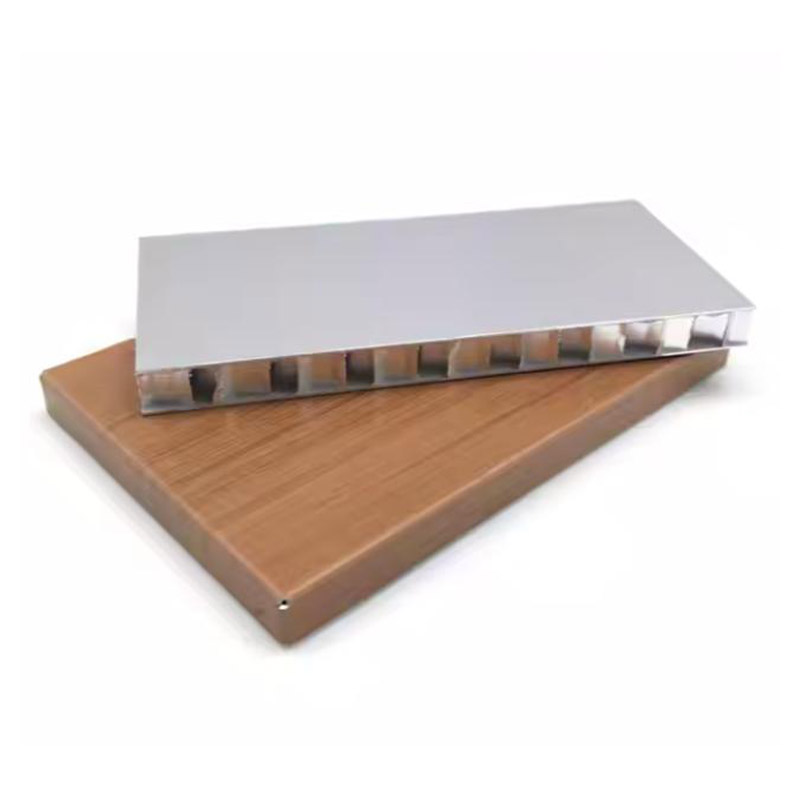How to Cut SPC Flooring?Step-by-Step Guide + Best Tools
When laying SPC flooring during decoration, many people get stuck at the cutting step – even though they choose waterproof and wear-resistant flooring, everything starts to crack at the edges and break into pieces. This not only wastes materials but also delays the overall construction progress. In fact, it’s not that SPC flooring is difficult to cut, but it has its own “little temper” : it is hard but brittle. If the method is incorrect, problems can easily occur.
Mastering the correct cutting method is the core link to ensure the perfect installation effect and efficient material saving of SPC flooring. This article will systematically introduce to you a complete solution from tool selection to cutting techniques, helping you to handle any situation with confidence.
Table of Contents
Before Cutting SPC Flooring
If the preparations before cutting are not done well, it is very easy to make mistakes later. In this section, we will explain clearly which tools to choose and what auxiliary materials are needed. Even beginners can prepare accordingly.
(1) Core tool Selection: Choose the “best tool” based on the scenario
Different cutting requirements require different tools. Choosing the right tool can save half the effort.
Manual tools: Suitable for small areas and thin SPC (under 4mm)
Utility knife + ruler: If you only need to cut a few pieces of floor, such as patching corners, this combination is sufficient. It is cost-effective and does not require electricity. When choosing a utility knife, remember to pick a blade with high hardness. Otherwise, it will become blunt after a few cuts and won’t cut neatly.
Manual tile cutting machine: More precise than utility knives, suitable for 4-6mm thick SPC, and can reduce chipping. The operation is also simple. Just place the floor properly, push the cutting wheel along the alignment line, and then gently press it to break. Even beginners can handle it.
Electric tools: Suitable for large-area, thick SPC (6mm and above) or irregular cutting
Electric circular saw: If the entire house is covered with flooring, using an electric circular saw is much more efficient. The key is to choose the right saw blade. An alloy saw blade with 100 to 120 teeth should be used. If there are too few teeth, the edges are prone to chipping. If it is a thick SPC, it is recommended to choose a saw blade with more than 120 teeth.
Angle grinder: When it comes to cutting irregular shapes around pipes and door frames, the Angle grinder is more flexible. However, when using it, it should be paired with a dust cover to avoid excessive dust and also protect the eyes.
Pitfall avoidance reminder: Do not use these tools
Ordinary chainsaws and scissors must never be used to cut SPC flooring. The saw blades of ordinary electric saws are not suitable for high-hardness materials and are prone to cracking the floor. Not to mention scissors, they can’t cut at all and will even deform the floor.
(2) List of Auxiliary Materials: The “Little Helper” for Reducing Error Rate
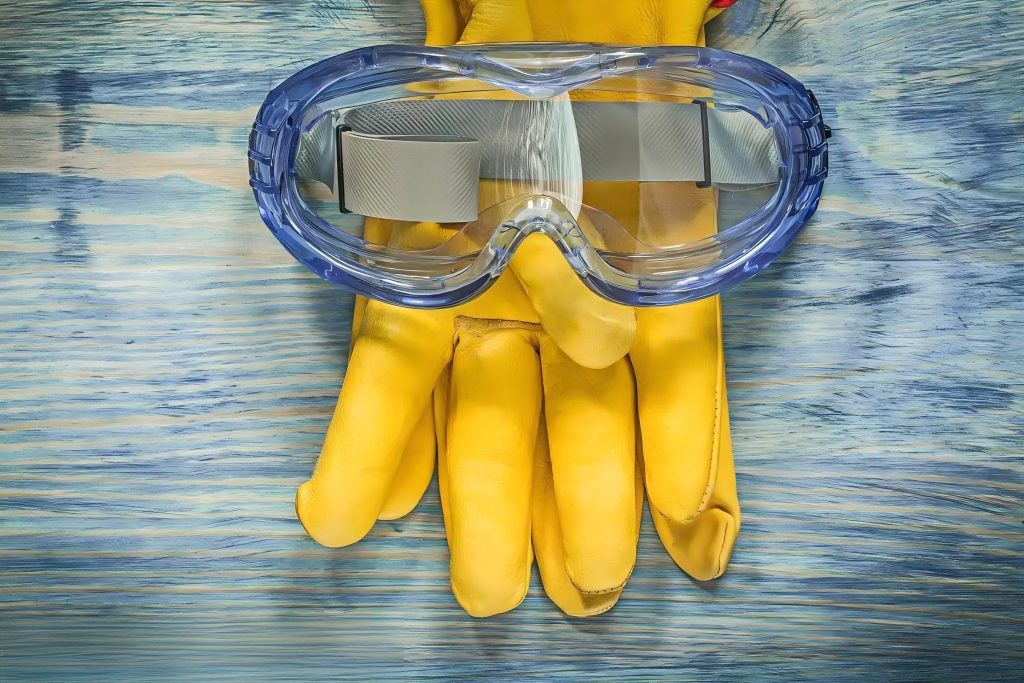
In addition to the core tools, these auxiliary materials are also indispensable, which can help you reduce mistakes and ensure safety.
Measuring tools: Choose a tape measure that can be accurate to the millimeter to avoid excessive size differences. Choose a pencil or marker that doesn’t fade easily; otherwise, the lines drawn will become unclear in no time. The square is used to ensure that the cutting Angle is 90°, avoiding cutting out crooked edges.
Protective materials: Goggles must be worn. When cutting, there will be flying debris to prevent eye injury. Anti-slip gloves can secure the floor and also prevent hands from being cut by tools. The pad is laid on the ground to prevent the already laid floor or tiles from being scratched during cutting.
Repair material: Masking tape is pasted on the cut to reduce chipping. Sandpaper (about 120 mesh) is used to grind the burrs after cutting, making the interface smoother.
Choose Your Weapon: Detailed Explanation of Four Cutting Methods
Choosing the most suitable method based on your tools, cutting volume and skill level is the key to success. The following is a detailed breakdown of the four mainstream methods.
Method One: Hook knife/Utility knife Cutting Method (A quiet and dust-free choice)
This method is most suitable for straight-line cutting, especially when working in an apartment or occupied environment where quietness and tidiness are required.
The tools you need are a heavy-duty hook knife, a long steel ruler and a cutting pad. When operating, place the SPC floor with the front side facing up and press the pre-marked cutting line tightly with a steel ruler. Then, use a hook knife to scrape along the edge of the steel ruler with force and repeatedly for 3 to 5 times until you can feel that the blade has completely cut through the wear-resistant layer and the core layer. Finally, move the floor to the edge of the table, align the cutting line with the edge of the table, and forcefully bend down with both hands. The floor will then neatly break along the scratch.
The advantage of this method is that it is almost silent, dust-free, has extremely low tool costs and is very portable. Its limitation lies in its inability to handle curves, and it is rather laborious for plates with a thickness exceeding 4 millimeters.
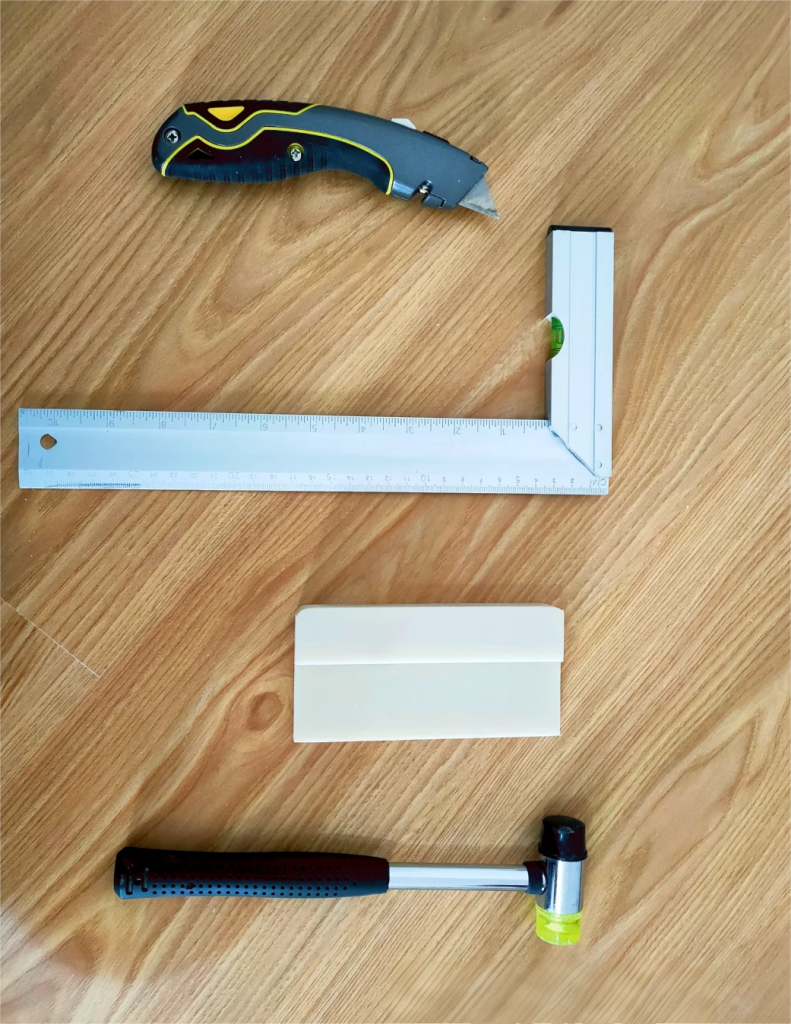
Method Two: Hand Panel Saw/Curve Saw Cutting Method (Flexible and Versatile Shaping Master)
This method is the best choice when you need to cut curves, circles or make holes in pipes.
Both hand saws and curved saws are competent. When using a hand saw, please fix the floor with the front side facing down and slowly saw along the lines with a fine-toothed saw blade. If a curved saw is used, with the floor facing down and securely fixed, choose a fine-toothed woodworking saw blade. After starting, it can be smoothly advanced along the line.
Its greatest advantage is its high flexibility, which enables it to handle various complex shapes. The drawback is that it will produce a lot of sawdust, the cut edge may have burrs, and subsequent grinding is required. Moreover, it needs some practice to ensure the accuracy when cutting straight lines.
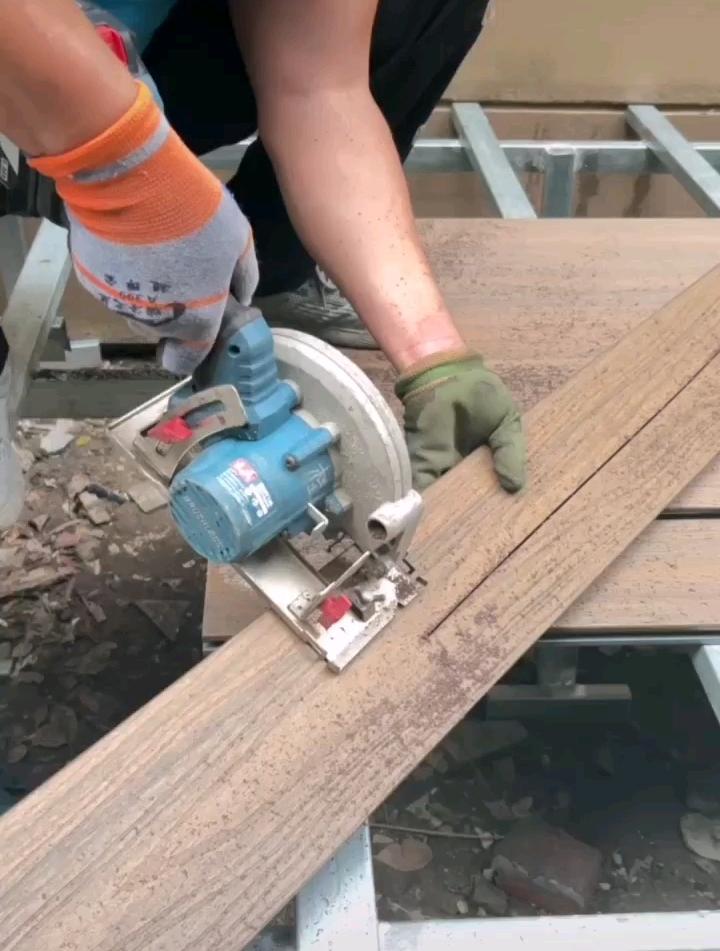
Method Three: Table Saw/Circular Saw Cutting Method (an expert in efficient and precise straight lines
If you need to carry out full-house installation and have a large number of linear cutting tasks, then electric tools will save you a lot of time and energy.
Table saws are the best choice for efficiency and quality. Circular saws combined with guide rail systems can also achieve similar results. The key to the operation is to adjust the depth of the saw blade so that it is slightly higher than the floor thickness by 1 to 2 millimeters. When using a table saw, place the floor facing up and push it steadily against the backrest. When using a circular saw, the front of the floor should face down and rely on the guide rail or a self-made backrest to ensure a straight cutting path.
This method can provide the most efficient, smoothest and most precise linear cutting effect. The disadvantages are that the equipment investment cost is relatively high, there is a lot of noise and dust during operation, and the safety awareness of the operator is required to be the highest.
Method Four: Angle Grinder Cutting Method (For strength-oriented players who need to use it with caution)
Angle grinders are powerful, but they are usually the last resort.
It can cut almost any shape at an extremely fast speed. However, it is extremely dangerous, requires extremely high operational control skills, generates huge noise and dust, and has very rough cuts, making it unsuitable for beginners who pursue precise operations. Unless the circumstances are special and you have rich experience, it is not recommended to give priority to this method.
Issue Of Cutting SPC Flooring That Users Are Most Concerned About
For beginners cutting SPC for the first time, which tool is the safest to choose?
Priority operators operate the tile cutting machine. It is more precise than a utility knife and won’t cut crooked due to poor control of force. It is safer than power tools, does not require plugging in, is easy to operate, and beginners can become proficient after a few practices.
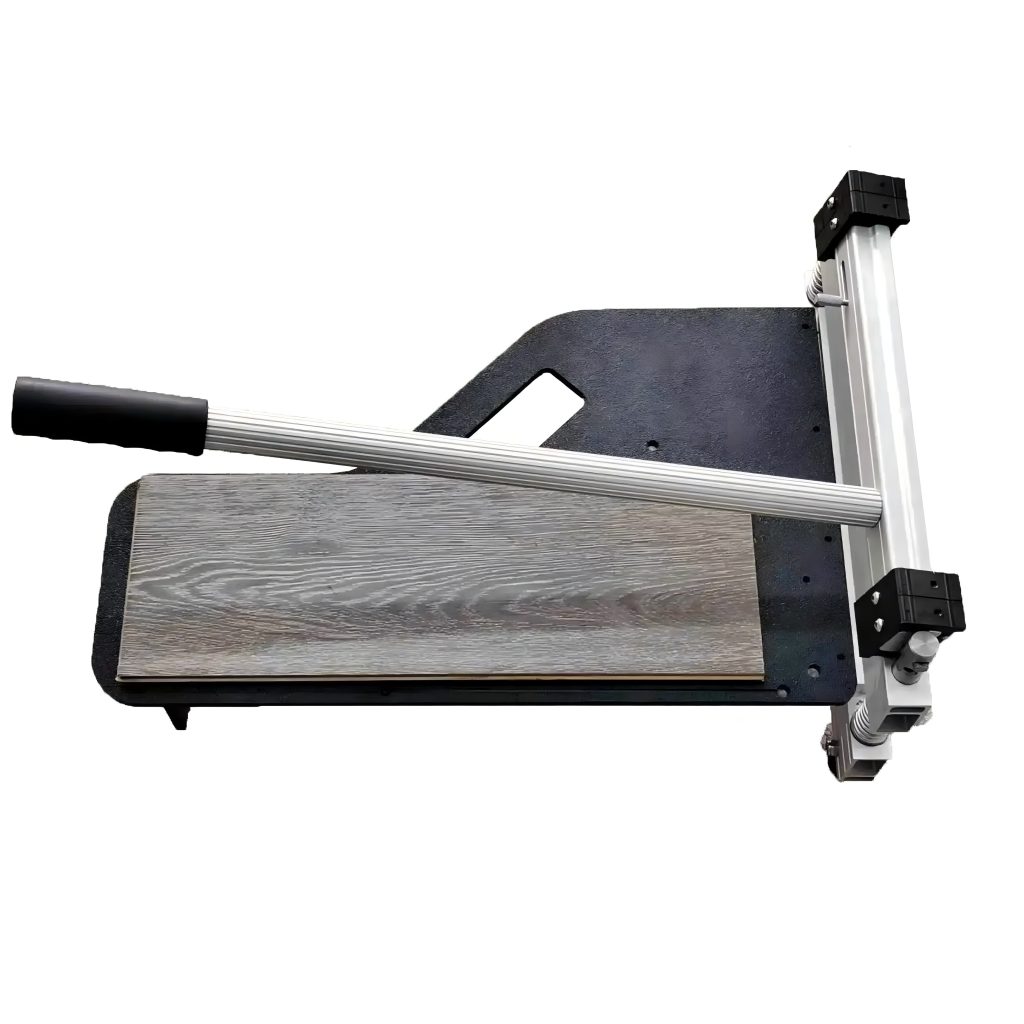
How to deal with the burrs on SPC flooring after cutting?
Use sandpaper of about 120 mesh and sand along the cut in one direction – do not sand back and forth, or the cut will be worn crooked. When grinding, apply gentle force to remove the burrs. There is no need to grind too much to avoid affecting the size.
What should be noted when re-cutting and re-joining old SPC flooring?
First, check if the old floor is deformed or bulged. If so, cut the deformed parts separately. After splicing, it is prone to arching. Secondly, the wear-resistant layer of the old floor may be worn out. When cutting, do it more slowly to avoid chipping. Finally, remeasure the dimensions. Do not use the original ones to prevent dimensional deviations caused by ground settlement.
How to avoid chipping at the cutting edge?
This is a common problem. The secret lies in having the saw blade of the tool enter from the front side of the floor. For table saws, cut the floor with the front side facing upwards. For circular saws and curved saws, cut the floor with the front facing down. In this way, the entrance of the saw blade is smooth, and chipping will only occur on the invisible back.
How to make holes in door frames or pipes?
For complex shapes, it is recommended to first make a cardboard template, confirm it is correct, and then print it onto the floor for cutting. Such tasks can be easily accomplished using a curved saw.
Will cutting SPC flooring produce formaldehyde?
No. The main components of SPC flooring are stone powder and PVC. It does not contain formaldehyde by itself. When cutting, only dust is produced. Just ensure good ventilation and wear a mask. There is no need to worry about poisoning.
Summary
In fact, cutting SPC flooring is not that difficult. The key lies in one formula: correct tools + standardized steps + pitfalls avoidance skills = precise cutting without waste or rework.
Finally, we once again emphasize safety. Please be sure to wear your goggles, gloves and mask properly. Especially when using power tools, concentration and caution are the greatest guarantees.
Before you begin the installation process, we strongly recommend practicing on a piece of scrap material to familiarize yourself with the tools’ properties and feel. This video explains the methods and details of cutting SPC flooring. We wish you a smooth installation and enjoy the fun and satisfaction of DIY.

